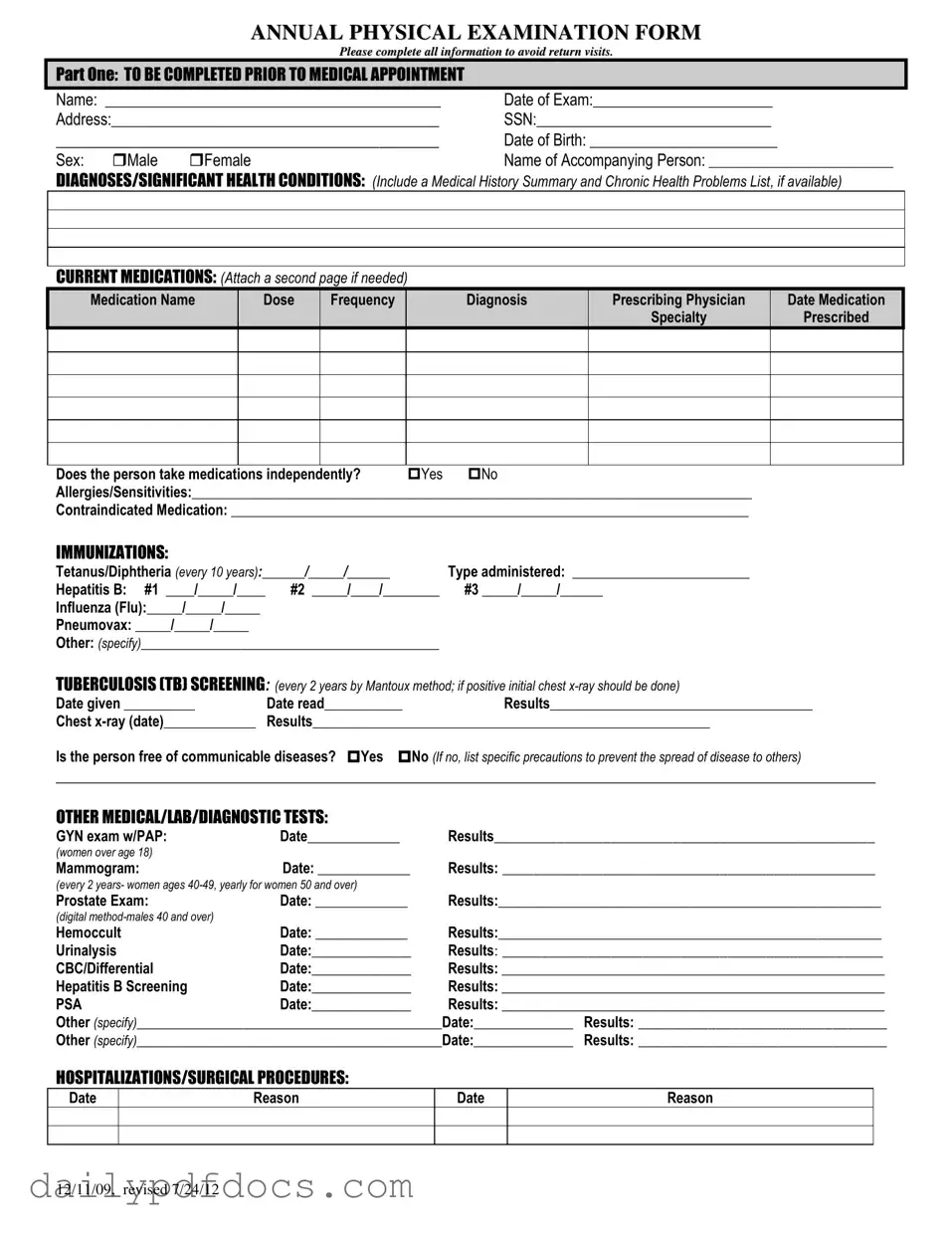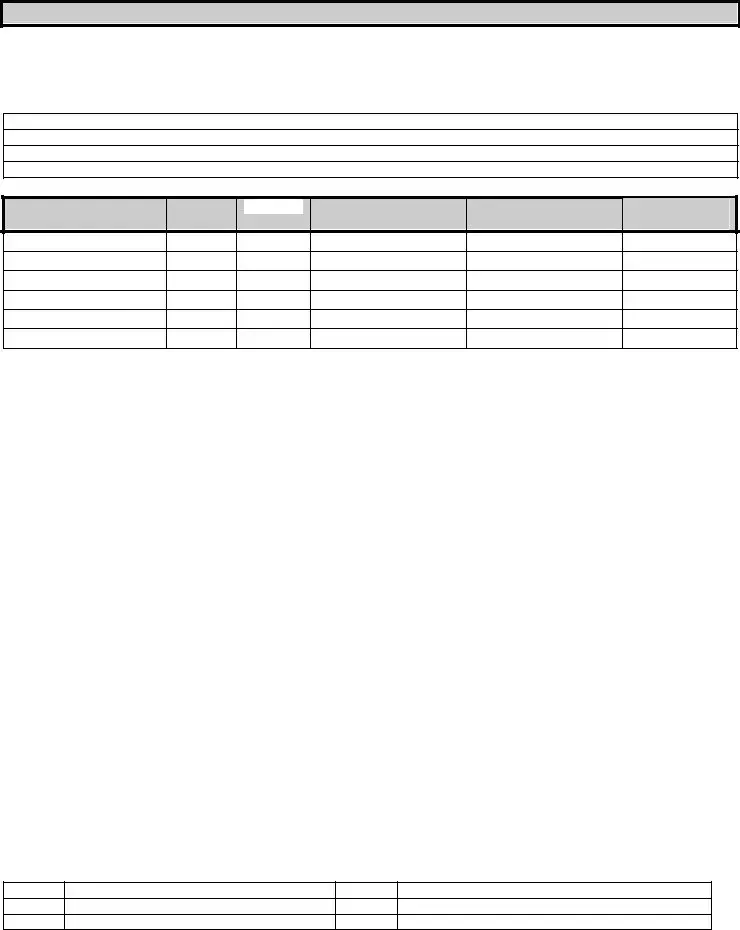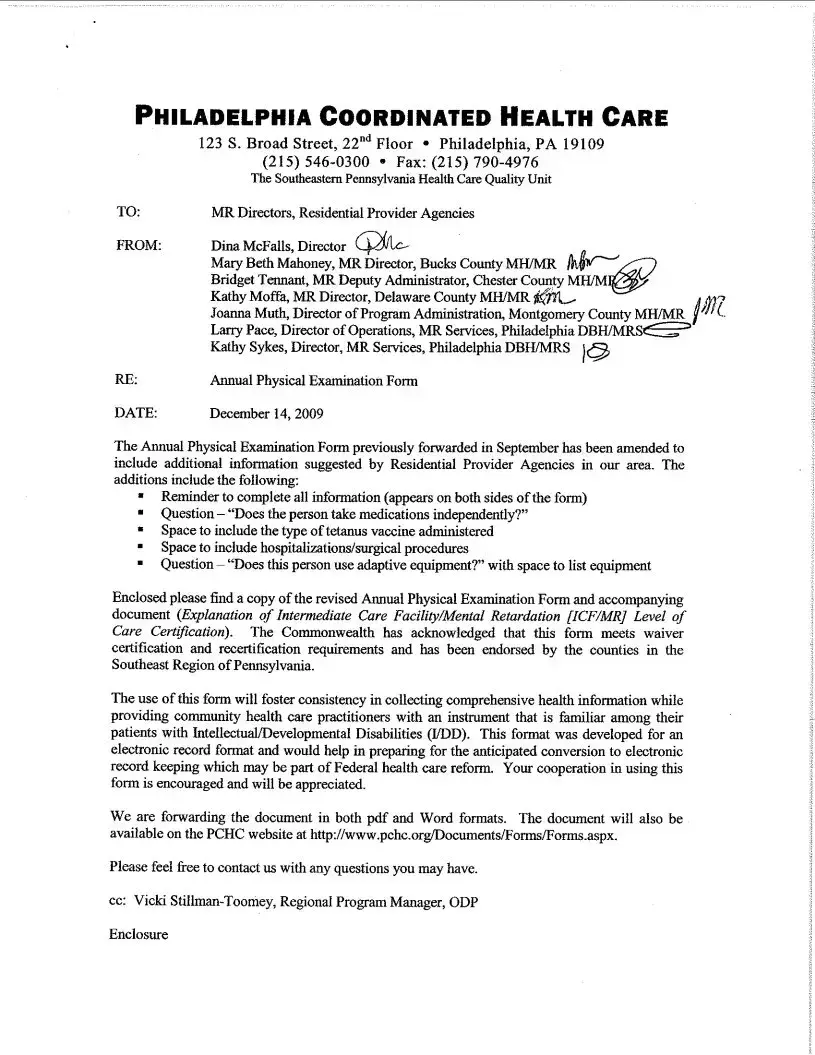What is the purpose of the Annual Physical Examination form?
The Annual Physical Examination form is designed to gather essential information about a patient’s health before their medical appointment. This information helps healthcare providers assess medical history, current medications, allergies, and any significant health conditions. By completing this form, patients can facilitate a more efficient and thorough examination, reducing the need for follow-up visits.
Who should complete the Annual Physical Examination form?
Patients scheduled for an annual physical examination should complete this form. It is important that they provide accurate and comprehensive information. If a patient is a minor or requires assistance, a parent or guardian should fill out the form on their behalf. Additionally, any accompanying person can help ensure all sections are completed properly.
What information is required in Part One of the form?
Part One of the form requests personal details such as the patient’s name, date of birth, and address. It also asks for the Social Security Number, the name of the accompanying person, and a summary of any significant health conditions. Patients must list current medications, allergies, and immunization history, which are crucial for the healthcare provider to know before the examination.
How should current medications be listed on the form?
Patients should list their current medications in a structured format, including the medication name, dosage, frequency, diagnosis, prescribing physician, and the date the medication was prescribed. If there are many medications, patients are encouraged to attach a separate page to ensure all information is included. This helps the physician understand the patient’s medication regimen and any potential interactions.
What immunizations need to be reported on the form?
The form requires patients to report their immunization history, including Tetanus/Diphtheria, Hepatitis B, Influenza, and Pneumovax. Patients should indicate the dates of administration and the type of immunization received. Keeping this information updated is vital for the healthcare provider to assess the patient’s immunization status and recommend any necessary vaccinations.
What should I do if I have a history of communicable diseases?
If a patient has a history of communicable diseases, they must indicate this on the form. It is important to list specific precautions that should be taken to prevent spreading the disease to others. This information allows healthcare providers to take necessary measures during the examination and treatment, ensuring the safety of both the patient and others.
What kind of medical tests should be included in Part Two of the form?
Part Two of the form requires information about various medical tests, such as blood pressure readings, vision and hearing screenings, and any diagnostic tests like urinalysis or mammograms. Patients should provide results from recent tests, which can help the physician evaluate overall health and identify any areas needing further attention.
What happens if a patient has experienced a change in health status since the last examination?
If a patient has experienced a change in health status, they should indicate this on the form and specify the changes. This information is crucial for the healthcare provider to understand any new health concerns and adjust treatment plans accordingly. Open communication about health changes can significantly improve patient care.
Why is it important to complete the Annual Physical Examination form accurately?
Completing the form accurately is vital for ensuring that healthcare providers have a complete picture of a patient’s health. Inaccurate or incomplete information can lead to misdiagnosis, inappropriate treatment, or overlooked health issues. Patients are encouraged to take their time when filling out the form and to ask for assistance if needed.



